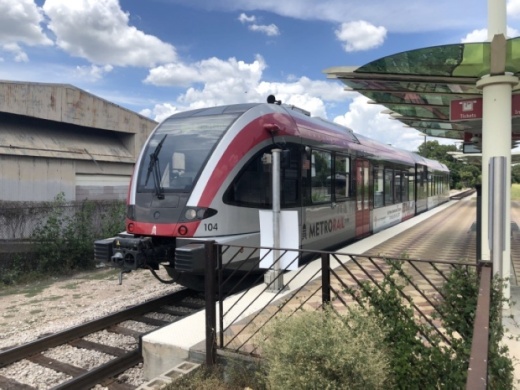Until that time, Capital Metro is gathering public feedback, refining its cost projection models and marking off checkpoints it needs to secure the more than $3 billion in federal funding it needs to complete the plan.
The two new light rail lines and the underground tunnel that will connect them downtown combined are set to cost $5.1 billion, making up more than 80% of the total costs of Project Connect. From now through next year, Capital Metro is in an environmental review phase. One checkpoint in the process is the completion of a federally mandated document called a final environmental impact statement, which will let the process then move into engineering.
As Capital Metro works toward that next step, expected in the winter of 2022, it is collecting feedback from the community on the Orange Line and Blue Line. Virtual public meetings are scheduled for April 27 from 5:30-7 p.m., April 28 from 11:30 a.m.-1 p.m. and April 29 from 9-10:30 a.m. to discuss train stations. Residents will have a chance to weigh in on what stations should look like, where they should be located, amenities that should be included and more.
Jackie Nirenberg, Capital Metro's director of community engagement and involvement, said in a media news conference April 27 that Capital Metro staff has conceptual locations for the stations, but they are not exact. At the meetings, staff will show examples of light rail stations on the ground in other cities; talk about the factors they weigh when selecting station location such as topography, access and speed; and hear more about what the public wants.
"The purpose of these meetings is to get the conversations started on how decisions will be made on stations," Nirenberg said.
The busiest time for construction starting in 2024 will also be the most expensive time period in the process. Capital Metro President and CEO Randy Clarke said at an April 26 board of directors meeting the transit agency is confident in its initial projections, which will be refined as the process goes along and could be affected by factors such as rapidly increasing land prices for acquiring right of way and elevated lumber prices as a result of supply chain issues during COVID-19.
Financial projections presented by Chief Financial Officer Reinet Marneweck on April 26 show Capital Metro spending $1 billion or more each year from 2024-27. The majority of the funding for that phase, when the light rail lines and the tunnel will be constructed, is expected to be provided by debt proceeds, which would then be repaid over much of the next two decades through 2045.
The expected busy construction period lines up with the Texas Department of Transportation's plans to spend $4.9 billion to reconstruct I-35 through an 8-mile stretch of Central Austin. Peter Mullan is the chief of architecture and urban design for the Austin Transit Partnership, the governmental organization tasked with implementing Project Connect. Mullan said at the April 27 press conference the goals of the two projects tie together.
"There's enormous opportunity, frankly, because so many of these investments are speaking to the same ideas which are about increasing connectivity, making Austin's future more sustainable and environmentally sensitive and human centered," he said. "It's about putting people first."





